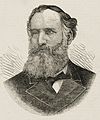New South Wales colonial election, 1894
|
|
|||||||||||||||||||||||||||||||||||||||||||||
|---|---|---|---|---|---|---|---|---|---|---|---|---|---|---|---|---|---|---|---|---|---|---|---|---|---|---|---|---|---|---|---|---|---|---|---|---|---|---|---|---|---|---|---|---|---|
|
|||||||||||||||||||||||||||||||||||||||||||||
|
All 125 seats in the New South Wales Legislative Assembly 63 Assembly seats were needed for a majority |
|||||||||||||||||||||||||||||||||||||||||||||
|
|||||||||||||||||||||||||||||||||||||||||||||

Legislative Assembly after the election
|
|||||||||||||||||||||||||||||||||||||||||||||
|
|||||||||||||||||||||||||||||||||||||||||||||
The 1894 New South Wales colonial election was held on 17 July 1894 for all of the 125 seats in the 16th New South Wales Legislative Assembly and it was conducted in single-member constituencies with a first past the post voting system. Suffrage was limited to adult white males. The 15th parliament of New South Wales was dissolved on 25 June 1894 by the Governor, Sir Robert Duff, on the advice of the Premier, George Dibbs.
This election saw the elimination of multi-member districts. At the previous election there had been 20 two-member districts, 10 three-member districts, and 9 four-member districts. Their elimination also saw the Assembly reduced in size from 141 to 125 members. Also, for the first time, the election was conducted on the one day.
Although he had lost control of the Assembly, Dibbs did not resign until after parliament had reconvened, when the Governor forced his hand.
New South Wales colonial election, 17 July 1894
Legislative Assembly
<< 1891 — 1895 >>
...
Wikipedia


